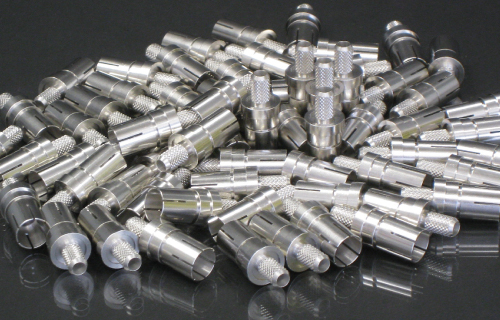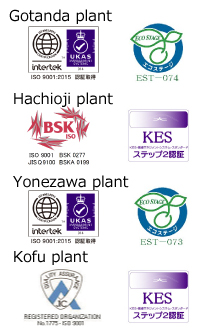Platings > by Metal > Nickel Plating (Ni)
Nickel Plating (Ni)

Nickel is a silver-white, hard, and corrosion-resistant metal that exhibits ferromagnetism.
Mitsuya offers 17 types of nickel plating to leverage these advantageous properties for various products.
Available platings
Pick up properties
We will introduce the property data about the nickel plating (ni) as follows.
These help you to find the property which you need.
Plating Appearance
We can provide bright nickel plating, semi-bright nickel plating and matte nickel plating. The type of nickel plating is selected based on mechanical properties, bonding activity, and surface appearance. Additionally, electro or electroless black nickel plating is used when an anti-reflective surface is required.
Nickel Plating as Diffusion Barrier
Nickel plating acts as a barrier to prevent the diffusion of the substrate material or the underlayer plating material into the upper layer.
Uniformity of Electroless Plating
Electroless nickel plating is applied to deposit on the surface of base metals by a chemical reaction and does not require electrical current. One advantage of this procedure is that the thickness of the metal plating is not controlled by electrical flux density fields. Even on surfaces with intricate forms, electroless nickel plating has a consistent thickness.
Heat Resistance of Nickel Plating
In order to provide connection stability in high-temperature environments, Mitsuya's cobalt-nickel alloy plating is selected.
Corrosion Resistance of Nickel Plating
The alloy's resistance to corrosion increases when phosphorus is present in the nickel. It is possible to create nickel-phosphorus alloy using electroless plating or electroplating.
Magnetic properties of nickel plating
Standard electroless nickel plating is ferromagnetic. By adding phosphorus or boron using a reducing agent, electroless nickel plating initially exhibits ferromagnetic properties, but when these elements increase to 3-4 wt%, the plating becomes non-magnetic. Non-magnetic electroless nickel plating can be converted back to ferromagnetic through heat treatment. Data comparing magnetic characteristics with varying heat treatments can be provided.
Electrical Resistivity of Nickel Plating
In electroless nickel-phosphorous plating, the phospohorus content increases the resistivity of deposits. However, heating treatment decreases the resistivity of the electroless nickel deposit. We can provide data explaining how resistivity changes in relation to heat treatment.
Coefficient of Thermal Expansion
We offer nickel-iron alloy plating, known for its exceptionally low coefficient of thermal expansion, also called Invar.
Hardness of Nickel Plating
We provide hard platings such as electroless nickel-phosphorus, , nickel-iron alloy electroplating, and electroless nickel-boron plating. Electro-nickel platings are categorized into Watt bath and sulfamic acid types. Sulfamic acid type plating deposits offer lower hardness, lower internal stress, and higher ductility.
Lubricity of Nickel Plating
Electroless nickel with PTFE (polytetrafluoroethylene) composite plating demonstrates low friction, water repellency, oil repellency, mold releasing property, and wear resistance.















